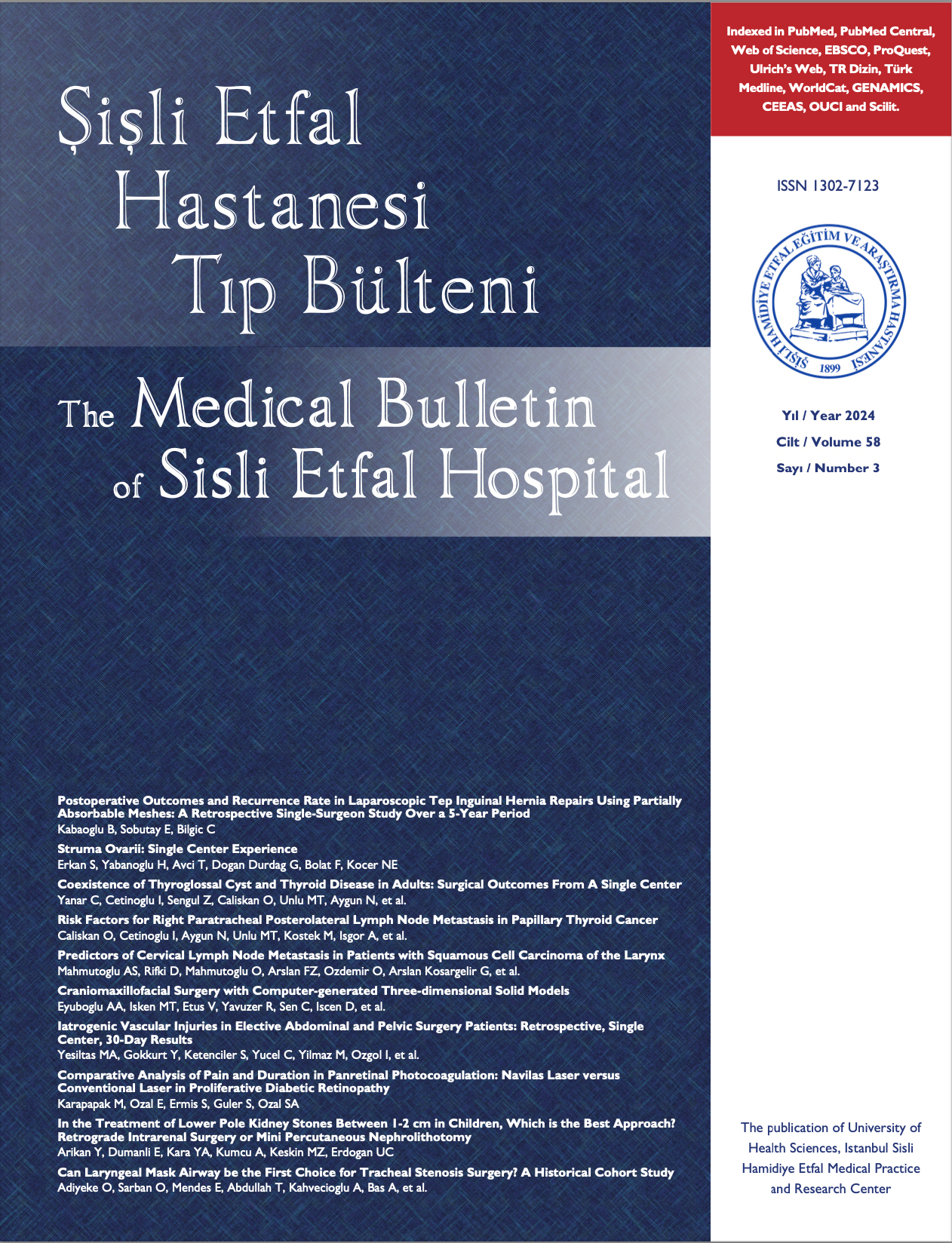
Preemptif Analjezinin Artroskopi Sonrası Postoperatif Ağrı Kontroluna Etkisi
G. Ulufer Sivrikaya, Ayşe Hancı, Nevşin Arda, Halis Enhoş, Melahat ErolŞişli Etfal Eğitim ve Araştırma Hastanesi, 2. Anesteziyoloji ve Reanimasyon Kliniği, İstanbulAMAÇ: Artroskopik girişimler sonrası, postoperatif ağrı kontra/unda, tenoksikamın preemptif analjezik etkinliğini araştırmaya yönelik bir çalışma planladık. 0
MATERYAL VE METOD: Hastane Etik Kurulunun izniyle, ASA /-il grubundan 40 hasta rastgele iki gruba ayrılarak; Grup/ e girişim öncesi 20 mg tenoksikam, intravenöz yolla verildi. Grup //ye herhangi bir ilaç verilmedi. Postoperatif dönemde ağrı, 1., 2., 8., 12. ve 24. saatlerde Visüel Analog Skala (VAS) ile değerlendirildi. Hastaların analjezik ihtiyacı olduğunda, 1 g metamizol sodyum intramüsküler olarak yapıldı. Analjezik verilme sayısı, toplam analjezik tüketimi hesaplandı. Bulgular student s t, Anova testleri ile değerlendirildi, p<0.05 anlamlı kabul edildi.
BULGULAR: VAS değerleri 1., 4., 8. saatlerde Grup1 de anlamlı olarak düşüktü. 12. ve 24. saatlerde gruplar arasında fark yoktu. Grup 1de analjezik ihtiyacı Grup 2 ye göre anlamlı olarak daha geç dönemde başladı. Analjezik verilme sayısı, toplam analjezik tüketimi Grup1 de Grup 2 ye göre anlamlı olarak azdı.
SONUÇ: Artroskopik girişimler öncesi tenoksikamın, postoperatif ağrı kontrolunda etkin bir preemptif analjezik olduğu kanısındayız.
The Effect of Preemptive Analgesia On Postoperative Pain Control After the Artroscopies
G. Ulufer Sivrikaya, Ayşe Hancı, Nevşin Arda, Halis Enhoş, Melahat ErolSecond Department of Anesthesiology and Reanimation, Şişli Etfal Training and Research Hospital, Istanbul, TurkeyOBJECTIVE: We planned this study, to investigate the effectiveness of tenoxicam as an preemptive analgesic agent, on postoperative pain control after the arthroscopic procedures.
STUDY DESIGN: After the approval by the medical Ethics Committee, 40 patients in ASA I-II randomized into two groups. Patients in Group I received 20 mg tenoxicam intravenously before the operation. in Group II no medication was used. Pain was assessed with Visual Analogue Scale was (VAS) at the postoperative 1., 4., 8., 12. and 24. hours. 1 g metamizol sodium was given to the patients intramuscularly when they needed analgesia. The number of analgesic usage and total analgesic consumption was calculatedfor the postoperative 24 hours. Student s t and Anova tests were usedfor the statistical analyses and p<0.05 was considered as significant.
RESULTS: VAS values were significantly lower in Group I at 1., 4. and 8. hours. There was not any significant difference at the postoperative 12. and 24. hours between the groups. Time to the first analgesic dose was significantly longer in Group I than Group II. Number of analgesic usage and total analgesic consumption was lower in Group I than Group II. The difference was significant.
CONCLUSION: We suggest that; tenoxicam is an effective analgesic agent when used before the arthroscopic procedures.
Makale Dili: Türkçe



















